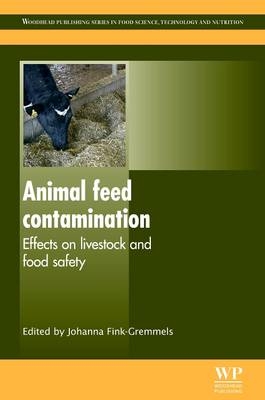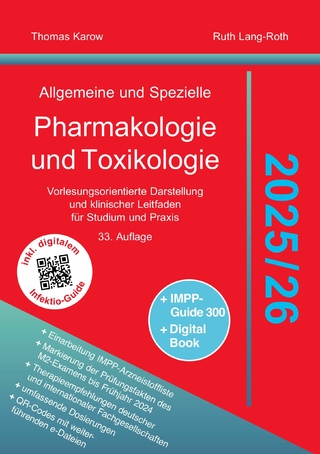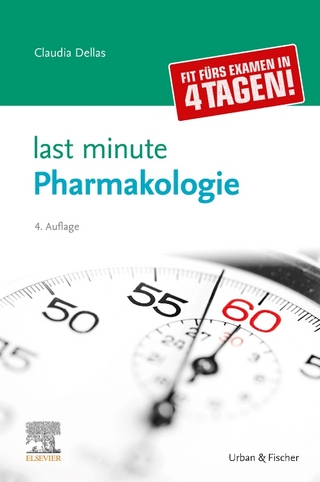
Animal Feed Contamination
Woodhead Publishing (Verlag)
978-0-08-101615-2 (ISBN)
- Titel wird leider nicht erscheinen
- Artikel merken
- Provides a comprehensive review of research into animal feed contaminants and their negative effects on both animal and human health
- Examines the contamination of feeds and fodder by microorganisms and animal by-products
- Analyses contamination by persistant organic pollutants, toxic metals and natural toxins
The production of animal feed increasingly relies on the global acquisition of feed material, increasing the risk of chemical and microbiological contaminants being transferred into food-producing animals. Animal feed contamination provides a comprehensive overview of recent research into animal feed contaminants and their negative effects on both animal and human health.
Part one focuses on the contamination of feeds and fodder by microorganisms and animal by-products. Analysis of contamination by persistent organic pollutants and toxic metals follows in part two, before the problem of natural toxins is considered in part three. Veterinary medicinal products as contaminants are explored in part four, along with a discussion of the use of antimicrobials in animal feed. Part five goes on to highlight the risk from emerging technologies. Finally, part six explores feed safety and quality management by considering the safe supply and management of animal feed, the process of sampling for contaminant analysis, and the GMP+ feed safety assurance scheme.
With its distinguished editor and international team of expert contributors, Animal feed contamination is an indispensable reference work for all those responsible for food safety control in the food and feed industries, as well as a key source for researchers in this area.
Johanna Fink-Gremmels is Professor in the Veterinary Faculty of Utrecht University and works within the Institute of Risk Assessment Sciences (IRAS). She is also the current President of the European Association for Veterinary Pharmacology and Toxicology (EAVPT) and a longstanding member of the CONTAM Panel of the European Food Safety Authority. Her work on animal health risk assessment following exposure to contaminants and natural toxins has gained international recognition, resulting in many academic distinctions.
Contributor contact details Woodhead Publishing Series in Food Science, Technology and Nutrition Preface Chapter 1: Introduction to animal feed contamination Abstract: 1.1 Animal feed production 1.2 Feed safety 1.3 Risk management and communication 1.4 Future trends Chapter 2: Animal feeds, feeding practices and opportunities for feed contamination: an introduction Abstract: 2.1 Introduction 2.2 Feeds and feeding practices 2.3 Feeding systems 2.4 Feed contamination opportunities 2.5 Rapid alert to feed and food contamination threats 2.6 Future trends 2.7 Sources of further information and advice Part I: Contamination by microorganisms and animal by-products Chapter 3: The ecology and control of bacterial pathogens in animal feed Abstract: 3.1 Introduction 3.2 Foodborne pathogen contamination in animal feeds and ingredients 3.3 Detection of pathogens in feeds 3.4 Persistence of Salmonella in feed 3.5 Sampling plans to control pathogens in feed 3.6 Reduction and/or elimination of feedborne pathogens 3.7 Conclusions Chapter 4: Detection and enumeration of microbiological hazards in animal feed1 Abstract: 4.1 Introduction 4.2 Microbiological analysis overview 4.3 Role and application of culture methods for the detection and enumeration of microbiological hazards 4.4 Role and application of molecular methods for the detection and enumeration of microbiological hazards 4.5 Role and application of emerging technologies for the detection and enumeration of microbiological hazards 4.6 Future trends Chapter 5: Assessment of the microbiological risks in feedingstuffs for food-producing animals Abstract: 5.1 Introduction 5.2 Hazard identification 5.3 Exposure assessment 5.4 Considerations on sampling and detection methods for Salmonella in feed 5.5 Assessment of the contribution of feed as a source of Salmonella infections in animals and humans 5.6 Considerations on the possible establishment of microbiological criteria for Salmonella in feed 5.7 Acknowledgements Chapter 6: Detection and identification of animal by-products in animal feed for the control of transmissible spongiform encephalopathies Abstract: 6.1 Introduction 6.2 Legislative framework and requirements 6.3 Future legislative trends in the EU 6.4 Detection and identification of processed animal proteins 6.5 Detection and quantification of glyceroltriheptanoate (GTH) 6.6 Future analytical methods 6.7 Conclusion 6.8 Sources of further information and advice Part II: Contamination by persistent organic pollutants and toxic metals Chapter 7: Hazardous chemicals as animal feed contaminants and methods for their detection Abstract: 7.1 Introduction 7.2 Hazardous chemicals 7.3 Legislation 7.4 Future trends 7.5 Sources of further information and advice Chapter 8: Animal feed contamination by dioxins, polychlorinated biphenyls (PCBs) and brominated flame retardants Abstract: 8.1 Introduction 8.2 Dioxins and dioxin-like polychlorinated biphenyls (dl-PCBs) 8.3 Exposure to dioxins and dioxin-like polychlorinated biphenyls (dl-PCBs) 8.4 Carry-over of dioxins and dioxin-like polychlorinated biphenyls (dl-PCBs) in food-producing animals 8.5 Brominated flame retardants 8.7 Appendix: abbreviations Chapter 9: Animal feed contamination by toxic metals Abstract: 9.1 Introduction 9.2 Routes of toxic metal contamination of animal feed 9.3 Animal health risk 9.4 Carry-over into food and human health risks 9.5 Brief review of detection methods 9.6 Prevention of toxic metal contamination 9.7 Regulatory controls 9.8 Future trends Chapter 10: Aquaculture feed contamination by persistent organic pollutants, heavy metals, additives and drug residues Abstract: 10.1 Introduction 10.2 Persistent organic pollutants 10.3 Heavy metals 10.4 Feed additives 10.5 Drug residues 10.6 Future trends 10.7 Sources of further information and advice Part III: Natural toxins in animal feed Chapter 11: Mycotoxin contamination of animal feed Abstract: 11.1 Introduction 11.2 Routes of mycotoxin contamination: raw feed materials 11.3 Routes of mycotoxin contamination: mixed feeds and concentrates 11.4 Animal health risks 11.5 Carry-over into food 11.6 Detection methods 11.7 Methods for the prevention of mycotoxin 11.8 Regulatory control 11.9 Future trends Chapter 12: Detection and determination of natural toxins (mycotoxins and plant toxins) in feed Abstract: 12.1 Introduction 12.2 Detection and determination of mycotoxins 12.3 Detection and determination of plant toxins Chapter 13: Prevention and control of animal feed contamination by mycotoxins and reduction of their adverse effects in livestock Abstract: 13.1 Introduction 13.2 Methods for decontaminating feedstuffs: strategies to prevent mycotoxin contamination pre- and post-harvest 13.3 Feed additives to prevent mycotoxin absorption from the gastrointestinal tract 13.4 Effects of nutritional supplementation on mycotoxicoses 13.5 Conclusions and implications 13.6 Future trends Chapter 14: Dietary exposure of livestock and humans to hepatotoxic natural products Abstract: 14.1 Introduction 14.2 The liver and hepatotoxicity 14.3 Types of adverse effect on the liver 14.4 Causative agents of hepatotoxicity 14.5 The hepatotoxic pyrrolizidine alkaloids 14.6 Conclusions and future trends Part IV: Veterinary medicinal products in feeds Chapter 15: Feed additives and veterinary drugs as contaminants in animal feed a " the problem of cross-contamination during feed production Abstract: 15.1 Introduction 15.2 Regulatory provisions 15.3 Cross-contamination at feed mills 15.4 On-farm cross-contamination 15.5 Transfer of residues to food 15.6 Recent developments in analytical methods 15.7 Future trends 15.8 Acknowledgements Chapter 16: Antimicrobials in animal feed: benefits and limitations Abstract: 16.1 Introduction: limitations 16.2 Benefits of antibiotic usage 16.3 Antimicrobials in feed to prevent diseases 16.4 Development of antimicrobial-resistant bacteria 16.5 Antibiotics and poultry gut health 16.6 Future trends 16.7 Acknowledgments Chapter 17: Alternatives to antimicrobial growth promoters (AGPs) in animal feed1 Abstract: 17.1 Introduction 17.2 Chronology of the ban on antimicrobial growth promoters (AGPs) in Europe 17.3 Main consequences of the ban on antimicrobial growth promoters (AGPs) in Europe 17.4 Mode of action of antimicrobial growth promoters (AGPs) in animal production and possible alternatives 17.5 Traditional therapeutic approaches as an alternative to antimicrobial growth promoters (AGPs) 17.6 Novel nutritional strategies and feed additives 17.7 Conclusions Chapter 18: Chemical risk assessment of animal feed Abstract: 18.1 Introduction 18.2 Risk assessment of feed additives and contaminants 18.3 Future trends 18.4 Acknowledgements Part V: Risks from emerging technologies Chapter 19: Safety of genetically modified (GM) crop ingredients in animal feed Abstract: 19.1 Introduction 19.2 Regulatory context for genetically modified (GM) crops to be used in feed 19.3 Regulatory safety assessment 19.4 Labelling, traceability and detection of genetically modified (GM) feed ingredients 19.5 Conclusions 19.7 Appendix: list of abbreviations Chapter 20: Detection of genetically modified (GM) crops for control of animal feed integrity Abstract: 20.1 Introduction 20.2 Detection of genetically modified (GM) plants 20.3 Protein-based detection of biotech crops 20.4 DNA-based detection of biotech crops 20.5 Conclusion Chapter 21: Potential contamination issues arising from the use of biofuel and food industry by-products in animal feed Abstract: 21.1 Introduction 21.2 Potential contamination issues arising from the use of biofuel by-products in animal feed 21.3 Potential contamination issues arising from the use of food industry by-products in animal feed 21.4 The impacts on animal and human health 21.5 Legislation and regulatory control 21.6 Future trends 21.7 Sources of further information and advice Chapter 22: Nanoscale feed ingredients and animal and human health Abstract: 22.1 Introduction 22.2 Definition of a nanoscale material 22.3 Origin of nanomaterials in animal feed 22.4 Potential health and safety issues 22.5 How to differentiate between nanomaterials and organic chemicals during detection 22.6 Regulatory status 22.7 Future trends 22.8 Sources of further information and advice Part VI: Feed safety and quality management Chapter 23: Animal feed sampling for contaminant analysis Abstract: 23.1 Introduction 23.2 Methods of sample selection 23.3 Designing sampling plans 23.4 Estimation of sampling uncertainty 23.5 Future trends Chapter 24: Ensuring the safe supply of animal-derived ingredients for animal feed Abstract: 24.1 Introduction 24.2 The animal livestock industry and the origin of animal by-products (ABP) 24.3 Rendering process evaluation 24.4 The TSE/BSE crisis and its implications 24.5 Processing of animal by-products 24.6 Risk identification and management in animal feeds 24.7 Future trends 24.9 Appendix: glossary of terms Chapter 25: Management of animal feed safety in the USA Abstract: 25.1 Introduction 25.2 Specific feed safety programs 25.3 The US Animal Feed Safety System (AFSS) 25.6 Conclusion Chapter 26: The GMP+ Feed Safety Assurance (FSA) Scheme Abstract: 26.1 Introduction 26.2 Development of GMP+ feed safety policy since 1992 26.3 Structure and content of the GMP+ Feed Safety Assurance (FSA) Scheme 26.4 Participation in the GMP+ Feed Safety Assurance (FSA) Scheme 26.5 Additional support of companies 26.6 Feed safety culture 26.7 Future trends 26.8 Acknowledgements Index
| Erscheinungsdatum | 14.07.2016 |
|---|---|
| Reihe/Serie | Woodhead Publishing Series in Food Science, Technology and Nutrition |
| Zusatzinfo | black & white illustrations |
| Verlagsort | Cambridge |
| Sprache | englisch |
| Maße | 156 x 234 mm |
| Gewicht | 971 g |
| Einbandart | kartoniert |
| Themenwelt | Studium ► 2. Studienabschnitt (Klinik) ► Pharmakologie / Toxikologie |
| Studium ► Querschnittsbereiche ► Prävention / Gesundheitsförderung | |
| Technik ► Lebensmitteltechnologie | |
| Veterinärmedizin ► Allgemein ► Tierernährung / Tierhaltung / Tierzucht | |
| Veterinärmedizin ► Großtier | |
| Weitere Fachgebiete ► Land- / Forstwirtschaft / Fischerei | |
| ISBN-10 | 0-08-101615-8 / 0081016158 |
| ISBN-13 | 978-0-08-101615-2 / 9780081016152 |
| Zustand | Neuware |
| Haben Sie eine Frage zum Produkt? |
aus dem Bereich


